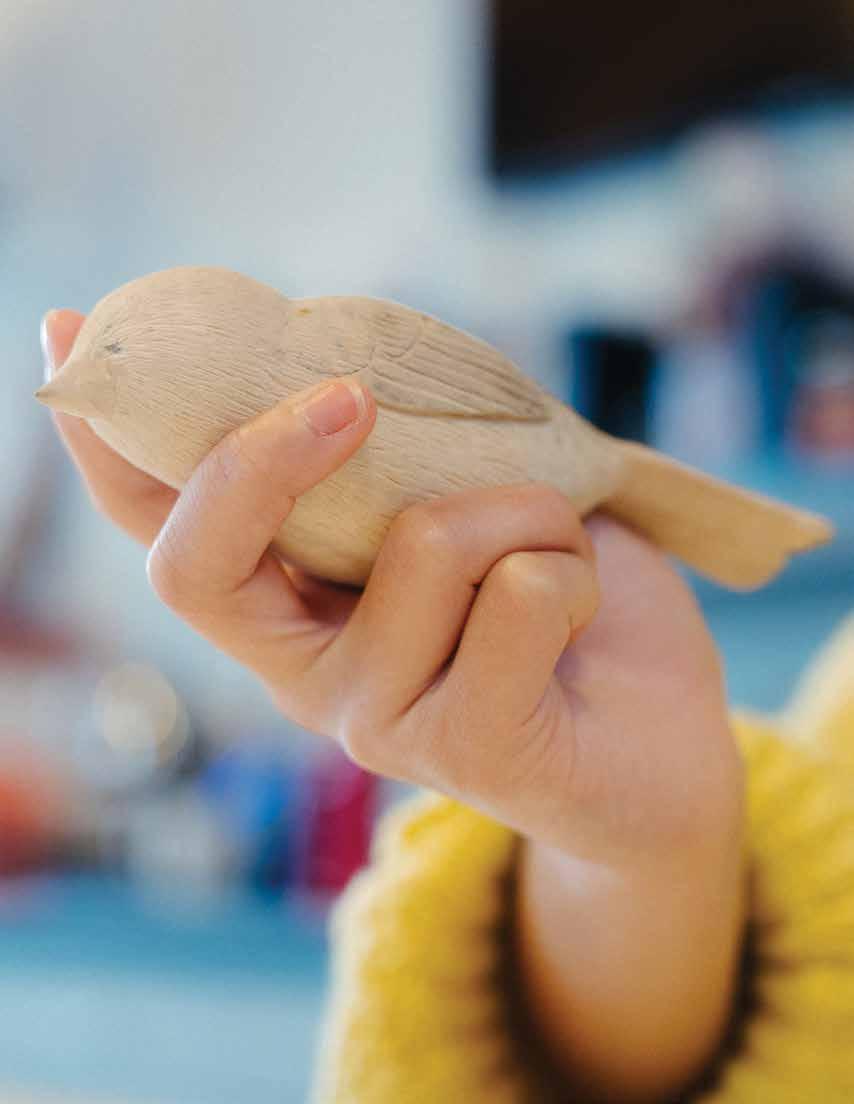

VIEWS
We are MAROON and GRAY
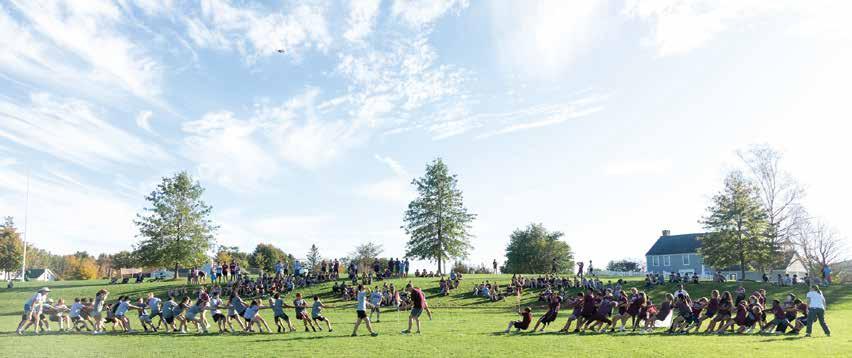
The tradition of Maroon & Gray is one of both competition and community spirit. Throughout the year, team Maroon and team Gray face off in academic, athletic, and service-related challenges, earning points for their team color. It culminates with either the Maroon or Gray flag flying on the campus flagpole for the duration of the next academic year.
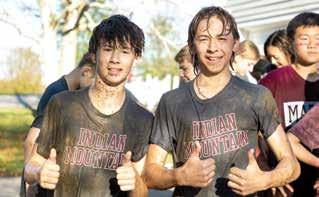
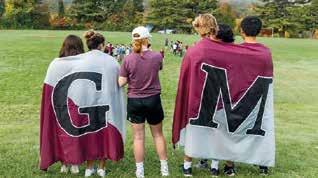
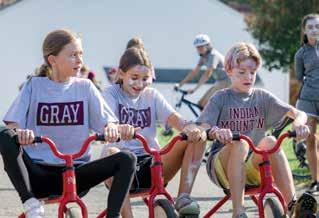
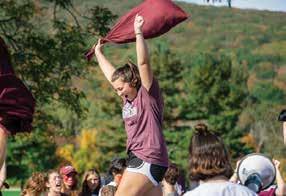
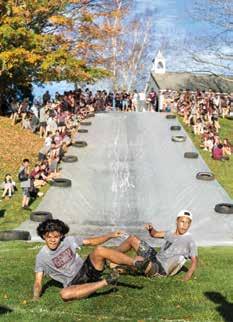
What is Mountain Day?
The students never know when it’s coming until the surprise announcement is made: “It’s Mountain Day!” Then, all classes are canceled and what follows is a day full of fierce but friendly competition — pillow fights, tricycle races, three-legged competitions and more. The team with the most wins at the end of the day scores points toward the end of year Maroon and Gray tally.
When it’s Mountain Day, school spirit is taken to a whole other level.
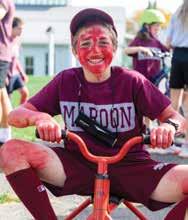
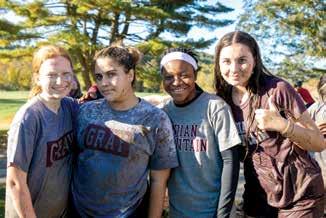
In This Issue
32 Why I Give

ON THE COVER:
Our Intensive Studio Art class offers students the chance to spread their creative wings, so to speak. This hand-carved wooden bird is by 8th grade student Stephanie Mo.
IMS BOARD OF TRUSTEES
Christopher Sanger ’86, P ’18 ’20 President
James Kiggen P ’16 ’20 Vice President
Anna Traggio P ’16 ’18 ’20 ’22 Secretary
Jamil Swati P ’27 ’30 Treasurer
Judith Benardete P ’18
Michele Browne P ’18 ’21
Maja Clark P ’24 ’26 ’28 ’33
Ulrika Ekman P ’16
Leonard Fong ’93 P ’22
Catherine Gouge ’01
Alexandra Jarislowsky P ’21 ’21
Henry Labalme P ’19
Juhyun Lim P ’22
Esther Ma P ’21 ’22
Kathryn Mattis P ’22
Pieter Mulder P ’19 ’22
During the 2022–2023 academic year, IMS will celebrate 100 years of service, community, growth, and learning on the mountain. As we look to celebrate our first century, we will also focus on our next 100 years.
Read more about our plans to celebrate the IMS Centennial on page 33.
Indian Mountain School
Indian Mountain School
@indianmtnschool
@indianmtnschool
IndianMtnSchool
David Nuzum P ’25 ’27
Justin Royce ’96
Jeremy Spofford ’90
Richard Turnure ’82 P ’24, ’26, ’28
Cary Ullman ’91, P ’28 ’29
Jason “JJ” Velez ’96
Lara Vitiello P ’24
Xiliang Zhang P ’21
View from Becket House
Message from Head of School Jody Reilly Soja
Building Our Future Together

I am proud to share the 2021–2022 issue of Views.
This is the first magazine our school has published since 2019 and it goes without saying that much has changed — at Indian Mountain School and throughout the world — during that time. In the past two years, I have found myself reflecting on the experiences we shared at IMS in September 2001. The memories of being at school on September 11th are still crystal clear. I recall in the aftermath of 9/11, comments about life never being the same, and an acknowledgement that we had been forever changed because of the attacks and events that followed. I know from conversations with alumni from that era, that their lives were shaped by that time in our history. They, too, remember being at IMS on that day and in the weeks that followed. Certainly, that changed the way we existed as a community and our priorities shifted dramatically.
Similarly, in the past two years, we have been frightened, challenged, and deeply affected by events outside of IMS and beyond our control. And yet, we have also been shaped by this experience in positive ways. As a community, we have committed to our collective values. We have learned how to care for one another in both tangible and intangible ways. We understand the value of being together in person and have further developed and held sacred our relationships. In March of 2020, we made a commitment to emerge from the pandemic in a position of strength. There was very little we could predict about the years ahead, but together we focused on our mission and our commitment to provide a positive experience for our students.
Today, we are on the cusp of our Centennial Celebration with our highest enrollment in history; we have had two record-breaking fundraising years, thanks to the support of our generous donors; and our campus is transforming in ways that will enhance the strength of our community. We have discovered even greater capacity for empathy, community building, connection, and
purpose. We have been powerfully shaped by our experiences and I have no doubt that our alumni in the next few years will reflect on how they have been influenced by this time in their young lives.
The following pages outline snapshots of life at IMS over the past few years, and the major initiatives that will carry us into our Centennial year and beyond. With teaching and learning at the forefront of our minds, we will continue to bring relevant and purposeful enhancements to our curriculum on each campus. We will propel our work in and commitment to diversity, equity, inclusion, and belonging. And, while many aspects of life have seemed to stand still over the past few years due to the pandemic, our campuses will be bustling with the development and construction of new and reimagined community spaces that will further connect our community. There is much to be proud of and excited for as we enter our Centennial year.
“We have discovered even greater capacity for empathy, community building, connection, and purpose.”
We also believe that the mark of a strong school community is its ability to respond to moments of great challenge. Over the last few years, our community and the world have indeed faced great challenges. But we remain steadfast in our commitment to foster in our students the relationships, compassion, resiliency, and adaptability necessary for a changing world.
Whether you are new to our community or a longtime friend of IMS, I am grateful for your partnership and your belief in our mission. We are indeed “building our future together.”

Head of School
Jody Reilly Soja P ’22 ’24
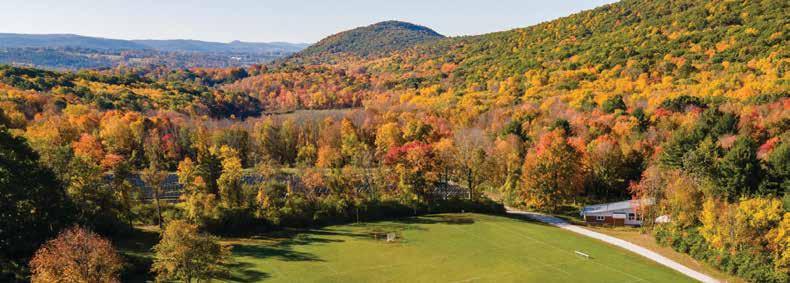
We are Stewards of the Land
As we look ahead to our centennial year and the years beyond, we are energized to fully recognize and honor the history of this land on which our school exists, and to promote good stewardship of it. We seek to build relationships with the land and the people who called these hills home for centuries. One step in this endeavor is our land acknowledgement: a formal statement that recognizes the original stewards of the land.
We acknowledge that Indian Mountain School is located on the ancestral land of the Mohicans, currently referred to as the Stockbridge-Munsee Band of Mohican Indians, ‘the people of the waters that are never still.’ We thank them for their strength and resilience in protecting this land, and aspire to uphold our responsibilities according to their example.
This draft of the IMS Land Acknowledgement Statement will continue to be examined and refined.
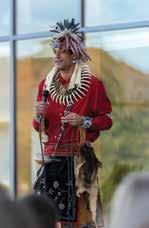
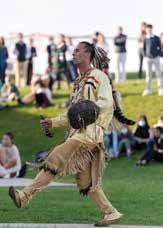
Continuing the Conversation
In October, we were honored by a visit from Cheenulka Pocknett and the Red Hawk Singers and Dancers, who hail from the Mashpee Wampanoag Tribe. They shared their history, traditions, music, and dance with our students. After the presentation, they joined our students in the classroom for workshops on indigenous history, DEI foundations, stereotypes and microaggressions, and cultural appropriation. Throughout the school year, IMS students and teachers regularly engaged in these important conversations and experiences.
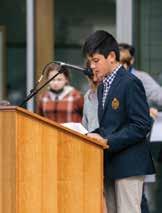
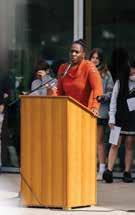
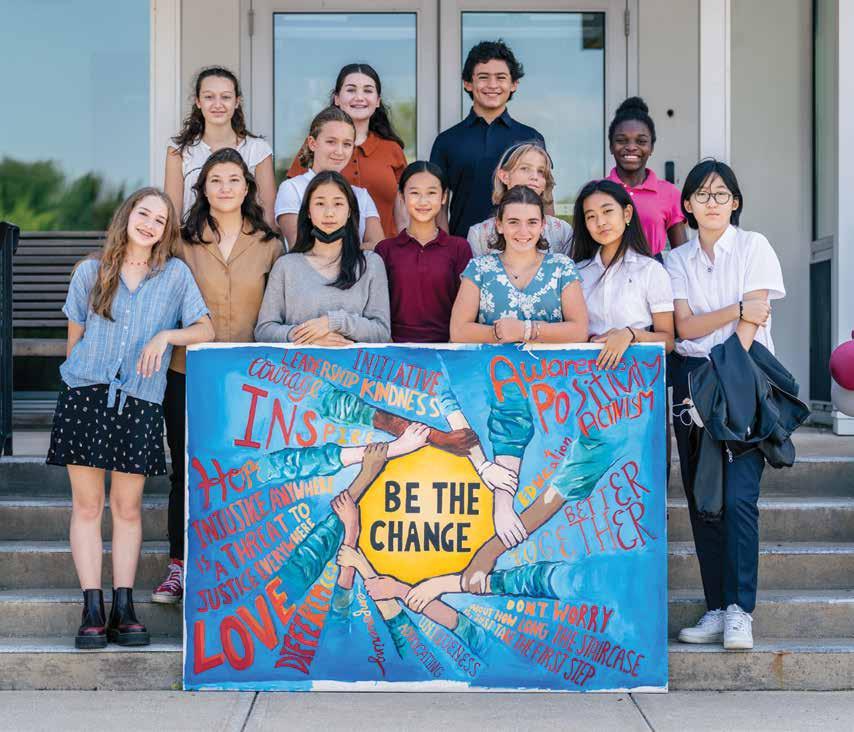
Being the Change
Leveling Up Our Work Around Diversity, Equity, and Inclusion
As a globally connected world, the challenges of the last few years have jolted us into a new reality and given us a unique perspective. In many ways, our vulnerability has become a common denominator, and with vulnerability comes the opportunity for understanding, connection, and growth. While our commitment to diversity, equity, and inclusion began in earnest years ago, the challenges we have experienced together have brought us closer. From the pandemic to ongoing racism and social unrest, these shared experiences have served as a catalyst for our work.
IMS is committed to aligning our policies, programs, and practices with our vision of diversity, equity, and inclusion. Recent action steps toward this goal
include the establishment of an Equity and Inclusion subcommittee of the Board of Trustees; the appointment of a Director of Diversity, Equity, and Inclusion and a Lower School DEI Coordinator; the development of a DEI Mission Statement; the formation of a crosscampus Equity Team; and the launch of a DEI audit. The journey to equity is one that we understand takes time and patience, and is never truly complete. But we are committed to building a community where every member feels a genuine sense of belonging and is celebrated for who they are.
Raising the B.A.R.
Bravery. Action. Resilience.
The spring 2022 issue of Independent School Magazine, published by the National Association of Independent Schools (NAIS), is centered around school culture. What is school culture? How does it impact a community? And what power does it have to shape our students and their future? These questions are ones that IMS has been asking as we look ahead to our Centennial year and our next century.
In her introduction to the spring issue, Andi Gabrick grapples with the idea of school culture in her “letter from the editor.” She recognizes the work schools have ahead of us, which can feel daunting and uncertain. “But the beauty of independent schools,” she writes, “is that they are in constant motion and have the innate capacity to remain anchored and evolve.”
While these seem like opposing ideas, the image of digging in and moving forward, IMS has found ways to do just this. Over the past few years, we have adopted several themes to anchor our DEI work that are inspired by our longtime core values of honesty, compassion, and respect. What began with “Better Together” and “Be the Change” has now leveled up. When we think about the expression “raising the bar,” we think about setting higher expectations for ourselves and for those around us. But, it is also an acronym for bravery, action, and resilience. These three qualities are perhaps the most important things that will drive our work forward and create meaningful and lasting change.
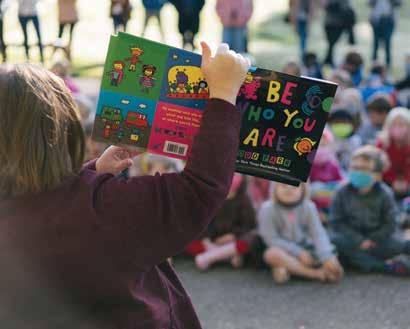
“But the beauty of independent schools,” she writes, “is that they are in constant motion and have the innate capacity to remain anchored and evolve.”
IMS Partners with The Glasgow Group to Conduct DEI Audit
This year, IMS partnered with The Glasgow Group, a nationally recognized firm that provides consulting services to help schools improve their cultural competency and enhance the health and inclusive nature of their communities. A core priority of this partnership was a comprehensive Diversity, Equity, and Inclusion audit that took place throughout the 2021–2022 school year. As a result, the school has received quantitative and qualitative data, as well as recommendations from The Glasgow Group, that will help us operationalize our commitment to diversity, equity, inclusion, and belonging at IMS.
A group of IMS community members — including individuals from each campus, two boarding students, and a number of administrators — worked together with The Glasgow Group to design and launch a comprehensive survey that was completed by faculty and staff, students in grades 7–9, alumni from the last 15 years, parents, and trustees.
The Glasgow Group then conducted focus groups made up of various constituencies based on the data that was collected from the quantitative survey. At the conclusion of the focus groups, they analyzed the data and provided a report to school leadership. We look forward to sharing this report and our work ahead more broadly.
Ascend and Succeed
The Literacy Support Program on the Lower Campus: Where Children Turn Their Differences into Superpowers.


When you enter Sandra Charlap’s office, there are brightly colored magnets, vibrant illustrations, a display of student writing, conjunctions printed on cards in the shape of glue bottles, a row of elegant tea tins (“they are the perfect size for index cards”), eye-catching word games, and a laminated quote by Proust: “The real voyage of discovery consists not in seeking new landscapes but in having new eyes.”
This delightful, creative space is the hub of the Ascend program on the Lower Campus, where young students who have been diagnosed with language-based learning differences, such as dyslexia, dysgraphia, or expressive language issues, come to learn how to turn their differences into superpowers. “Their tutoring room should be an aesthetically rich environment that inspires them the moment they enter,” Ms. Charlap says.
With a robust literacy program weaved through all of the grades, a child who may display early struggles in letter/sound correspondence or reading can be properly diagnosed and worked with individually from a young age. On the Lower Campus, every student in Ascend receives one-to-one tutoring for 45 minutes, five days a week. On the Upper Campus (grades 5–9), the program is less remedial and more support-based, with instructional groups and classroom support.
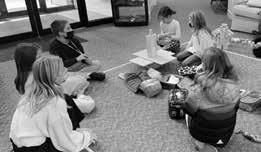
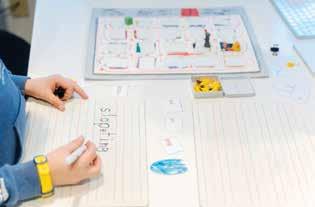
At the core of the Ascend program is the understanding that if you have a deficit in one area, it often means you have strength in another. Often that strength can be creativity, keen spatial awareness, or heightened analytical thinking and resourcefulness. “Even though a student might struggle with spelling, that same student can still be a great writer because they have a creative imagination for telling stories,” Ms. Charlap explains. “I’m going to build fundamental language skills, but never at the expense of supporting and nurturing strengths. That’s the biggest key to this whole endeavor. We give students the appropriate remediation and support to stay in the mix so they can share their talents with everyone. And, you know, a lot of these kids are rising to the top. People’s heads would spin if they could see all the amazing things our students are doing!”
“Any kind of learning difference is to be celebrated, not hidden.”
When students graduate from Ascend on the Lower Campus, they can feel a mix of emotions — excitement, pride, but also trepidation. This year, a fifth grade student proposed a new program, “Ascend Bridge.” Here, Ascend students from both campuses meet on a regular basis to celebrate their learning differences and to talk about the transition from Lower Campus to Upper Campus. This “bridge” is a way for the older students to stay connected and be mentors, and for the younger students to ease some of the fear of the unknown.
SPI Network
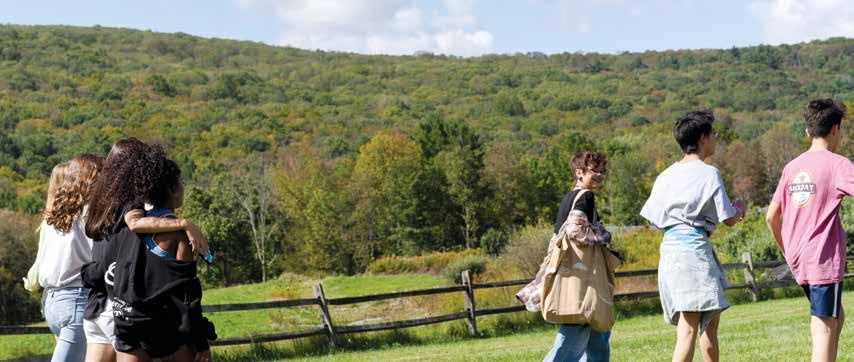
Sustainability at IMS: It’s Not Just Solar Panels

As Director of Sustainability Programming and Initiatives at IMS, Tom Stewart sometimes uses an acronym and introduces himself: “I’m the Director of SPI.” He may even let that secret agent nuance hang in the air for a second. But, there’s nothing secret about Sustainability Programming and Initiatives at IMS — it is integrated with purpose and relevance throughout the curriculum and in close collaboration with all other school departments and operations.
“Most people who are Directors of Sustainability in schools come through the science departments. I’m not that, I’m humanities. And this makes sense because so much of what needs to happen has an ethical side to it — there is human impact. Sustainability is not just about solar panels, it’s about the way we fundamentally operate.”
The SPI program has a broad reach — working with the Buildings and Grounds team to consider impacts on the land as the school builds new buildings or updates existing ones, examining where the school’s money is being invested, reviewing the curriculum and the extracurricular activities being offered. All of this falls under the umbrella of sustainability. Mr. Stewart has also been
“What are we doing to reduce the environmental and equity impact that the school may have in a bigger way?”
working closely with Shantel Hanniford, Director of Diversity, Equity and Inclusion at IMS, to connect elements of sustainable development with DEI in a thoughtful way. “This is about looking more deeply into everything we do: big picture, what are we doing to reduce the environmental and equity impact that the school may have in a bigger way? This combination is a really exciting thing. I don’t know of any school below the college level that is even close to combining the environmental considerations with the equity aspect in such an intentional way. And we’re leading the charge on that.”
Shantel Hanniford, IMS Director of Diversity, Equity and Inclusion
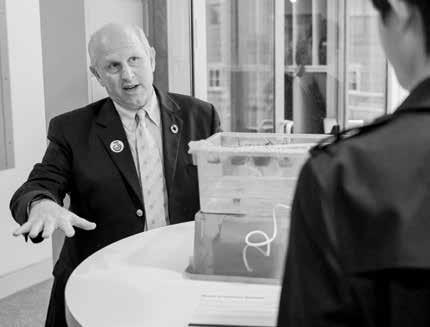
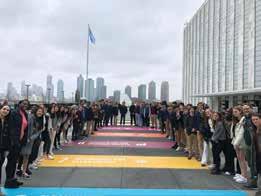
Tom Stewart is a certified Global Schools Advocate on behalf of the Global Schools Program; an initiative of the United Nations’ Sustainable Development Solutions Network. Mr. Stewart and IMS are charged with integrating sustainable development topics into the school’s curriculum.
“If there’s anything schools can do, it is to impact the future through what we teach. This is the decade of action.”
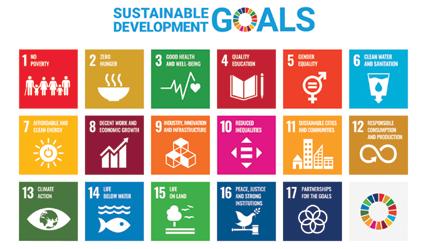
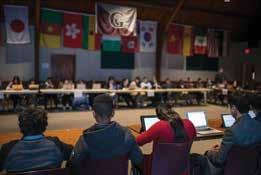

SDG Symposium
Sustainability is filtered through all grade levels at IMS, and culminates in grade 9 with a year-long study of the United Nations Sustainable Development Goals (SDGs) and student-designed solutions to specific global challenges. Students present their findings and possible solutions at the annual Poquonook Solutions Symposium. Some of this year’s topics include: preventing ocean wildlife poaching, using recycled plastic as building materials, and restoring abandoned buildings to revive underserved communities.
Tom Stewart, Asst. Head of School and Director of Sustainability Programming and Initiatives

A Conversation with Soledad O’Brien
Award-Winning Documentarian, Journalist, and Author
What happens when 100,000 metric tons of toxic asphalt shingles are illegally dumped into a person’s backyard? In a predominantly Black neighborhood called Floral Farms just south of downtown Dallas, the answer is “nothing.” This, according to award-winning documentarian and journalist Soledad O’Brien, is a glaring example of environmental racism.
In April 2021, the IMS community hosted a conversation with Soledad O’Brien to kick off its 5th Annual Poquonook Solutions Symposium, the ninth grade capstone project rooted in the UN Sustainable Development Goals (SDGs). O’Brien spoke to students, faculty, and families about the intersection of social justice and the environment, and shared a moving story she recently produced about environmental racism and its implications for people’s health, wellbeing, and livelihood.
In her first episode of “Disrupt and Dismantle,” O’Brien’s sixpart series that explores inequalities Black communities face and the actions that need to be taken in order achieve lasting change, she visits a hazardous dump site in a suburban Texas neighborhood. It had reportedly been creating significant air pollution and causing health issues among people in the community. “It grew so tall that locals started calling it ‘Shingle Mountain,’” said O’Brien during an April Zoom call with the IMS community. The pile of shingles, which contain asphalt and fibers that are harmful if inhaled, rose for two years, reaching a height of nearly 10 stories.
Until local and national press coverage spread, steps to address the “mountain” were not taken. Why? Because of environmental racism, O’Brien said. “Environmental racism is a subset of systemic racism,” she noted, pointing out that discrimination is often embedded in laws and rules. “It might seem subtle, but actually has a lot of power because it affects how people act and how they make decisions.” In the case of Shingle Mountain,

people of color were being disproportionately impacted and residents lacked the power to organize.
The intersectionality of social and environmental justice is something that Mr. Tom Stewart discusses with his students as they embark on their year-long journey to study the SDGs. To the ninth grade students who were about to begin their capstone project, O’Brien shared that change “begins with being fearless about the kinds of questions you want to ask.” Ninth graders were inspired by O’Brien’s approach to reporting, storytelling, and social justice, and, with her advice in mind, they designed impressive prototypes of solutions to one of the 17 Global Goals and presented them to a panel of sustainability experts.
“I think there’s
no better way to have an impact than giving kids at this age the knowledge necessary, the sense that they have agency, and a will to act.”
Tom Stewart, IMS Director of Sustainability Programming and Initiatives
Soledad O’Brien, parent of two IMS students, was involved in the inaugural IMS Poquonook Solutions Symposium in 2018 when she joined us in-person to interview Jeffrey Sachs, a world-renowned economics professor, bestselling author, innovative educator, and global leader in sustainable development. IMS was thrilled to host her again for a conversation in April 2021.
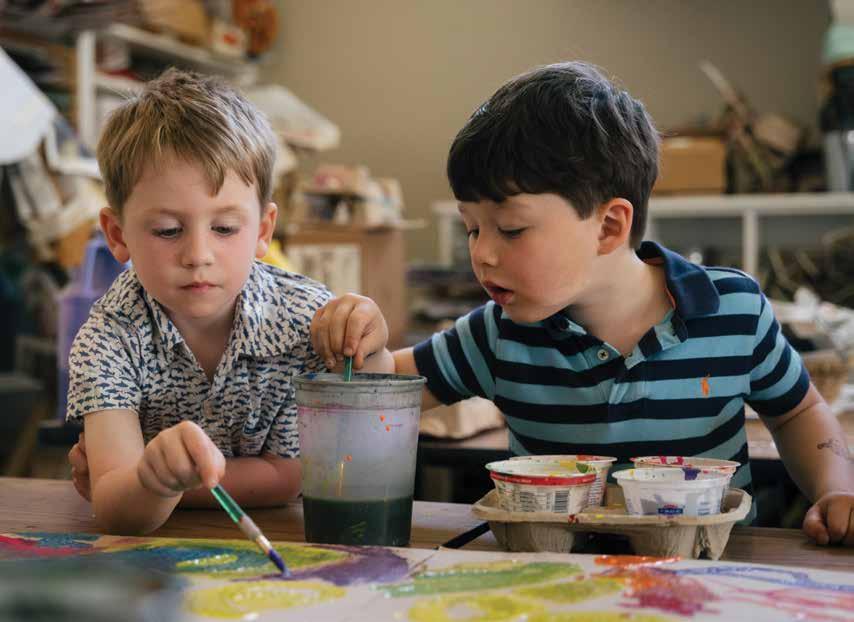
Building Relationships
A Child’s Academic Journey Through the IMS Lower School
“Yippeeeee!” The gleeful cheers have an intensity that can only come from young children. In this case, it’s a group of first graders in science class, thrilled that their classmate successfully launched a balloon rocket across the room. That joy is at the core of learning at the IMS Lower School.
Sitting in the same classroom later that day, Amy Vorenberg, Head of the Lower School, sums it up: “What are we about? We’re about building relationships. Relationships that connect students with their peers, with their teachers, with the campus, and with the community. For teachers, those relationships are also built between the classrooms and subjects we teach in order to support, challenge and inspire our students in an integrated and foundational way from Pre-Kindergarten on up through fourth grade.”
Amy Vorenberg came to the IMS Lower Campus in 2020, at the height of the pandemic when connections were challenged by masks, being six feet apart, and countless Zoom meetings. But the opposite happened within the school’s curriculum.
“For example,” Ms. Vorenberg says, “the things we work on in science are a blend of language arts and literacy skills, math skills, observational skills, artistic skills. We have stopped seeing our offerings as disconnected subjects and, instead, we understand that everything we teach is interrelated.”
One building block that connects every classroom is the literacy curriculum. In 2021, the school implemented a program that is rooted in a workshop model, along with a system of reading progression that allows students to build skills at their level. The goal is to empower the students to see themselves as literacy learners and, by building skills at their level, children feel buoyed and they improve. As Ms. Vorenberg says, “to see the enthusiasm, pride and joy of learning is truly magical.”
An added resource in the literacy program is a partnership with the Ascend teachers, who work with students with diagnosed language learning differences, to create a uniform set of materials for teaching key words and sounds. “The result,” Ms. Vorenberg says, “is that we are all literacy teachers at IMS — the music instructor teaching lyrics, the
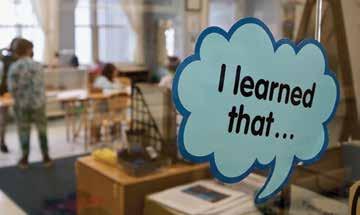


“Everything we teach is interrelated.”
Amy Vorenberg, Head of the IMS Lower School

The IMS Ascend program is the literacy support program for students who are diagnosed with language based learning differences. The robust literacy program in the Lower School creates a system where no child can fall through the cracks; a child who displays struggles in letter/ sound correspondence or reading can be diagnosed early, and worked with individually in the Ascend program. See more on page 6.
science teacher working with science journaling, the math teacher using word problems — and we can really lean into that work with the benefit of having similar resources in every classroom.”
The same philosophy supports the math program on the Lower Campus. We know that math isn’t just about computation; it is about patterns, spatial reasoning, logic, puzzle-solving, quantities and relationships. Children who are used to memorizing formulas often give up on math when those formulas get more complicated. To help nurture mathematical curiosity and mathematical literacy, Lower Campus students are being taught foundational skills of being mathematical
thinkers, including numeracy and subitizing — understanding the why, not just knowing the how.
Teaching for relevance and purpose is a priority at IMS and for our youngest students it’s a journey that begins on the Lower Campus. “When you have an integrated curriculum,” Ms. Vorenberg explains, “you’re connecting the dots between literacy and math and art and science and social studies and in turn, the real world. You’re empowering children to see those relationships and make meaning out of them.” She adds, “The result is thrilling! Seeing that energy of being a learner, seeing the light bulbs go off when the connections are made. That’s what I love.”
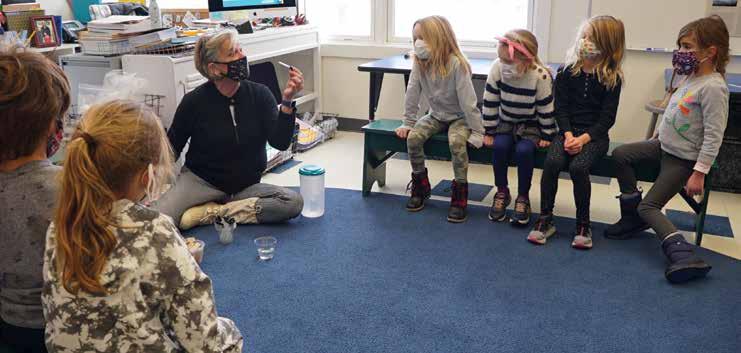
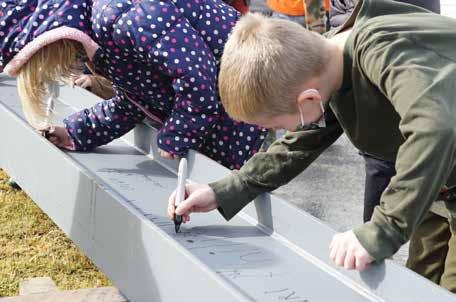
Every year, the Lower School announces a theme, and this year the theme was Build. As Ms. Vorenberg explained, “We’re building friendships, we’re building readers and writers, we’re building skills in mathematical thinking, and we’re building an even stronger community.” Students have also observed the “real-life” build of the new Field House (see page 30) even signing the beams that will support the structure for decades to come.
Outdoor Adventure and Education
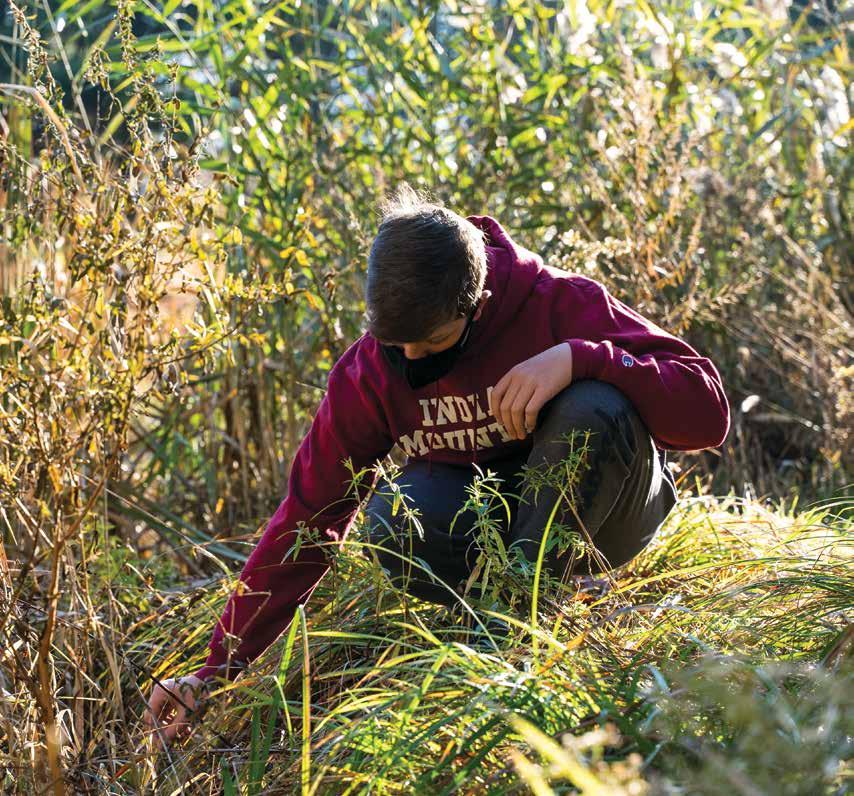
On any given day at IMS, you may see a group of giggling kindergartners exploring the trails on Indian Mountain, 1st graders collecting icicles from playground equipment, a 5th grader quietly observing insects by the pond, or the 9th grade class carrying 20-pound backpacks, headed for New Hampshire. This is our Outdoor Adventure and Education program, or OAE, and it is a hallmark of the student experience at IMS.
Throughout the year, the mountain, ponds, fields and trails on our 600-acre campus provide countless opportunities for experiential learning, play, and personal growth. The OAE program breaks down the classroom walls, serving as a complement to material being studied in math, science, literacy, geography, language, art, and more.
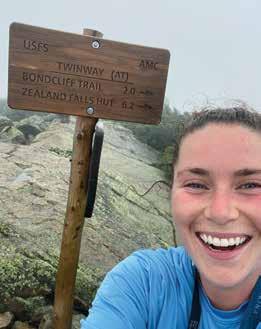
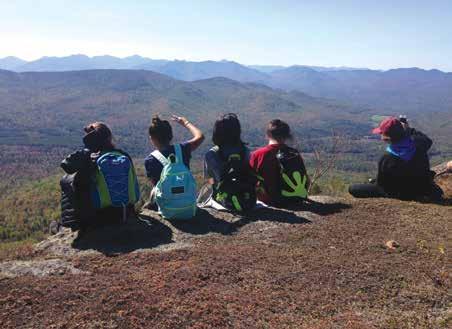
Eliza Statile is the OAE Director, and came to IMS in 2019. An avid outdoors person, her childhood included hiking and camping trips, ropes course challenges, bungee jumps and a trek through New Zealand which solidified her ambition to be an outdoor education leader. “I love what the outdoors can do for everyone,” Ms. Statile says. “At IMS, the OAE program teaches students to problem solve, be resourceful, manage emergencies, and push themselves outside of their comfort zones. In the process they develop a deep respect for nature and build lifelong bonds with their classmates.”
Lower Campus students participate in outdoor learning in a variety of ways, including frequent trail hikes, “Take it Out Tuesdays,” and work in the school garden. The first overnight adventure happens in 5th grade on the mountain, which sets the stage for more challenging excursions off campus in 7th through 9th grade — ziplining, whitewater rafting, hikes and camping trips in the White Mountains and the Taconic Range, as well as off the coast of Maine. OAE also works closely with sustainability programming and initiatives at IMS, helping students understand the ripple effects of their actions, both on the environment and in their community. Students learn the power they have as individuals to become good stewards of the land and protect it for generations.
The OAE program serves another purpose beyond Adventure and Education. Spending time away from screens, playing in fresh air, and finding a space to clear the mind is perhaps more important now than ever before to support mental health and wellness.
IMS students come from diverse backgrounds and experiences, and Ms. Statile makes sure that OAE is accessible to all. As she puts it, “Our job is to remove the barriers, whether it’s financial, physical, or something else. It’s important to me that we are meeting students where they are and we’re helping them feel supported.” Ms. Statile adds that sometimes the biggest barrier is fear. “We prepare a lot,” she says, “and we reassure the students that any step is a big step that they should be proud of, and that we’re so proud of them. And, there’s a lot of positive reinforcement from their classmates. Facing challenges like this is a bonding experience.”
Ms. Statile hopes her students will be inspired by her passion for the outdoors, and that they will carry the lessons they’ve learned into secondary school and beyond. She says, “Sure, it is challenging to carry a 20-pound backpack for 10 miles in the woods. Of course it’s more comfortable to be inside in controlled temperatures. But if you are prepared and open-minded, you can really tackle a lot more than you think. And that’s one of the biggest lessons you can learn in life.”
“At IMS, the OAE program teaches students to problem solve, be resourceful, manage emergencies, and push themselves outside of their comfort zones. In the process they develop a deep respect for nature and build lifelong bonds with their classmates.”


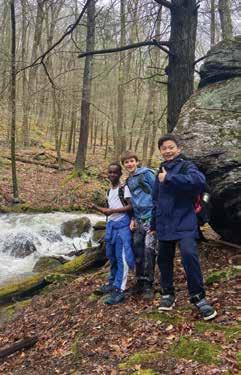
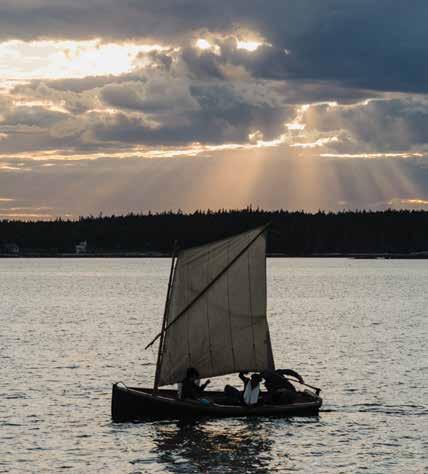
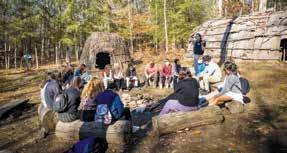

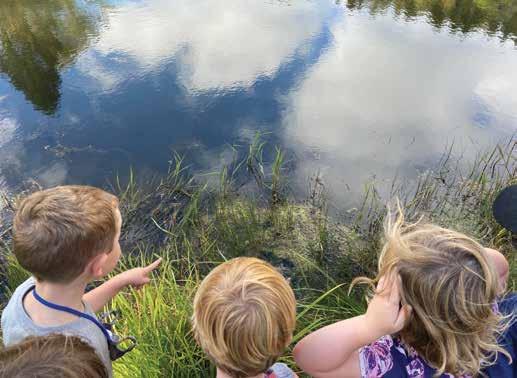
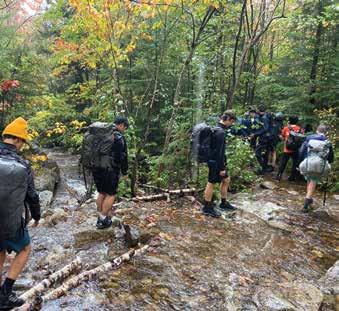
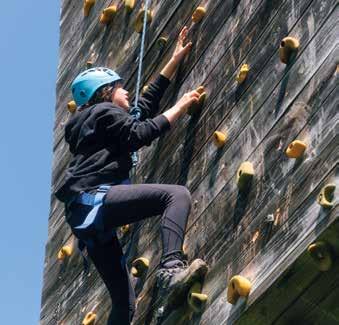
Our Mountain as a Classroom
Our mountain is beautiful and it serves as a classroom, a natural playground, and a place in which students develop confidence and relationships with the world around them.
Trail
Big Chimney
Upper Trail Ski Trail Summit Trail
Upper Road
Reservoir
Falcon Ledge Campus View Dam River
Ski Rope WerntzWay Blue Trail Ropes Course



Take that risk. Take that extra step to push and challenge yourself. Through that process you’re bound to make mistakes, but IMS is a place where you’re safe to make mistakes. Teachers make sure that it’s ok for that to happen.”

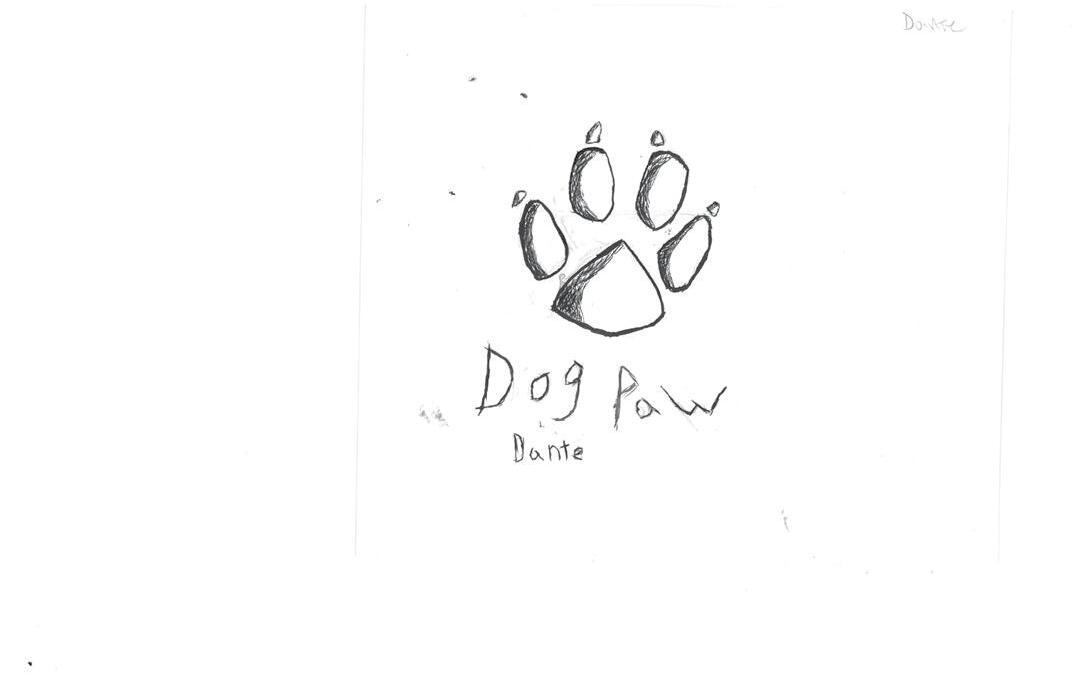



Climbing
Doolittle
Stockton

Boarding Life
“My favorite part of being a boarding student is: everything! In the dorm you have a really strong sense of family and you feel like it’s home.”
Joy G., Singapore

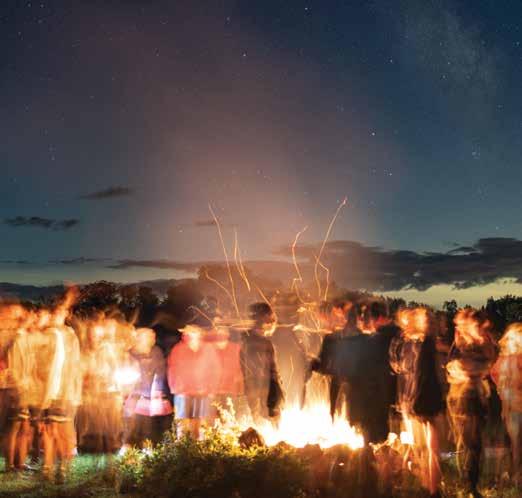
IMS is home to more than 100 students from across the country and the world. Our dormitories are a place for our students to feel safe, to connect, and to grow. The bonds formed amongst our boarding community are truly for life.

“The best thing about being a boarding student at IMS is knowing that there are always people who are going to be there for you.”
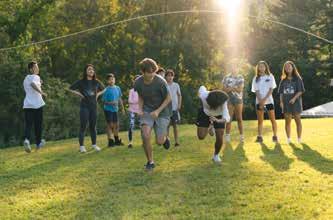
“IMS has taught me how to become a better person. How not to be afraid of failure. How the community helps each other succeed.”
Matteo G., Mexico City
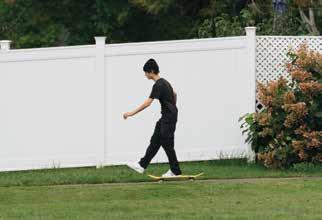
Leelee S., Greenwich, CT
Athletics
Our students participate in a sport every season, either competing at a high level or developing a new skill. They push themselves to play their best, they work as a team, show good sportsmanship, and achieve extraordinary success. We’re proud of our Falcons.
FALL
Cross Country
Equestrian
Golf
Mountain Biking
Soccer
Volleyball
WINTER
Basketball
Competitive Swimming
Dance
Squash
Ice Hockey
Ski Racing
Recreational Skiing and Snowboarding
SPRING
Baseball
Lacrosse
Softball
Golf
Tennis
Ultimate Frisbee

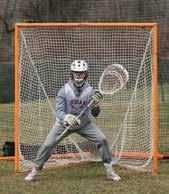




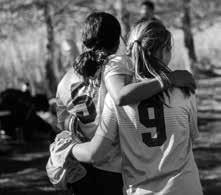
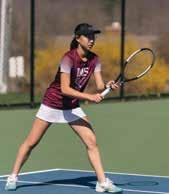
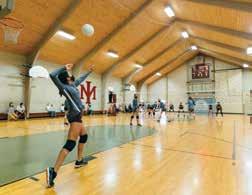
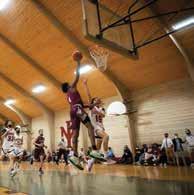

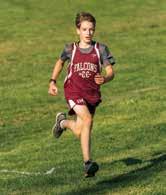
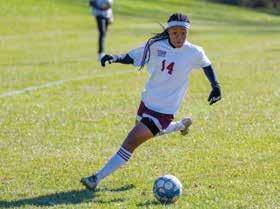
Life Through Service
Our Founding Motto Endures
It is no accident that the words “Life Through Service” are carved into a plaque that hangs above the entrance to our Upper Campus Assembly Hall. Founded by Francis Behn Riggs, Indian Mountain School — which was first known as The Riggs School — was originally designed as a working farm and school for “boys of modest means.” Between 1915 and 1921, students studied core academic subjects, agricultural practices and responsibilities, and the importance of selflessness and giving back.
In The Riggs School’s founding catalog, Mr. Riggs shared, “In these times, boys at an early age are forced to face the world and are asked, first, what they are and, second, what they can do.” His belief was that through education and a spirit of generosity and service, we could rid the world of conflict.
“The
motto Life Through Service really positions your thinking to look at careers that are not necessarily about yourself and what you’ll do 9–5, but rather ‘What can I help solve?’ ”
Elizabeth Rich, ’09
Soon after The Riggs School closed, Indian Mountain School opened with the same mission and motto. After donating his farm and home to the school, Mr. Riggs transformed the once secondary school into a junior boarding school for children in grades 1–8, the idea of service at its core.
Today, Life Through Service is not only seen as our founding motto, it endures as a motivating principle for our community and program.
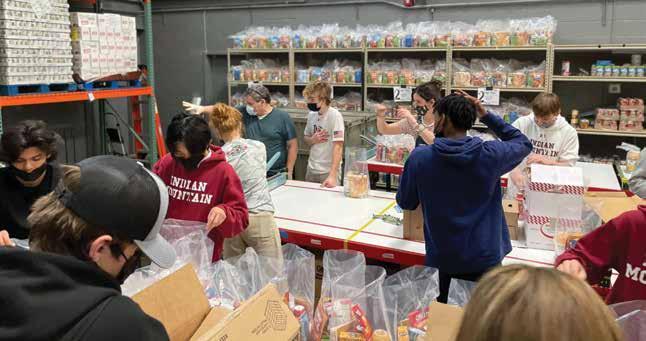
9th grade students volunteering at Filling in the Blanks, in Norwalk, CT.

Leadership Through Action
Recently, a group of IMS administrators sought to examine the relevance of our motto and its place within the school in the 21st century. The driving question was, “Why Service?” Their answer speaks volumes about our motto’s lasting purpose and the way it informs the IMS experience.
“Service is compassion in action. It is making one’s respect for the world and its inhabitants manifest. It’s the honest, altruistic response to the indisputable fact of our interdependence. At IMS, we cultivate students whose sphere of concern starts at home, but extends to neighbors and the people of every nation.”
Service At IMS Today
On the Upper Campus, students spend time learning about and exploring forms of service in their classes, during assemblies, and in advisories. Earlier this year, a group of more than 20 students gathered with Head of School Jody Reilly Soja to discuss our founding motto and whether it resonates with their experience. Annabel Kim, a ninth grade boarding student, shared her belief in the power of our motto. “Life Through Service pushes our boundaries of what ‘community’ actually is,” she said. “It’s not just IMS or Connecticut, it’s about how our actions impact the world or the globe. We think we are small, but our actions have a ripple effect and can result in something bigger and more impactful.”


In that spirit, a group of 9th graders traveled to Norwalk, CT in February to help pack and seal bags for Filling in the Blanks, a non-profit group that helps fight childhood hunger by providing meals needed on the weekends — a need that has increased more than 200% in the past two years. IMS students arrived ready to work hard. Making four assembly lines, they packed bags with food, sealed them, and put them into bins for delivery. They filled and sealed 1,080 bags in just 80 minutes.
On the Lower Campus, our youngest learners begin to develop a responsibility to the larger community through intentional efforts, starting with the classroom cohort and extending to broader campus initiatives. As soon as they arrive, students learn what it means to be an IMS Falcon. Kindness, generosity, and compassion are core attributes. Over time, smaller responsibilities, including classroom jobs and Lower Campus service projects, begin to impart the understanding that we can learn and grow through helping and caring for others.
Priscilla Rudd Wolf Academic Center
On June 11, 2021, beloved faculty member Priscilla Wolf announced her retirement and was honored for her 30 years of service and dedication to the school. During our commencement ceremonies, a plaque dedication revealed the new Priscilla Rudd Wolf Academic Center — the space in the Harris Family Library that houses our tutoring offices. Ms. Wolf’s profound dedication to IMS students and teachers between 1991 and 2021 as our Director of Academic Support will be commemorated in this new space.
“Ms. Wolf is a teacher of teachers,” said Head of School Jody Reilly Soja during the 2021 Commencement Ceremony. “She was one of my greatest teachers and she helped me fall in love with teaching, the way she has helped countless students fall in love with learning.” Ms. Wolf’s colleagues describe her as a treasure trove of knowledge about how learning happens and the types of support students need to be successful. “She wholeheartedly believes in every child’s capacity for growth” adds Mrs. Soja. In gratitude for Ms. Wolf’s unwavering support of the school, we wish her the very best in retirement.
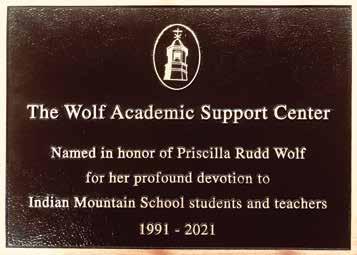
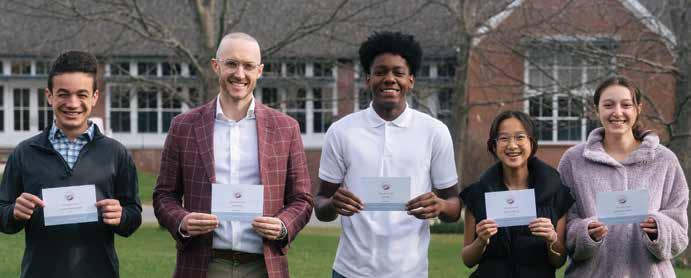
The Mountain Card
HONESTY | COMPASSION | RESPECT
The Mountain Card is the school’s highest formal accolade and recognizes individuals who go above and beyond our expectations to bring our motto, Life Through Service, to life.
Recent Mountain Card Recipients: Jayden Hernandez, Mr. Kyle Halloran, Paul Coty, Stephanie Mo, Ingrid Schmitt
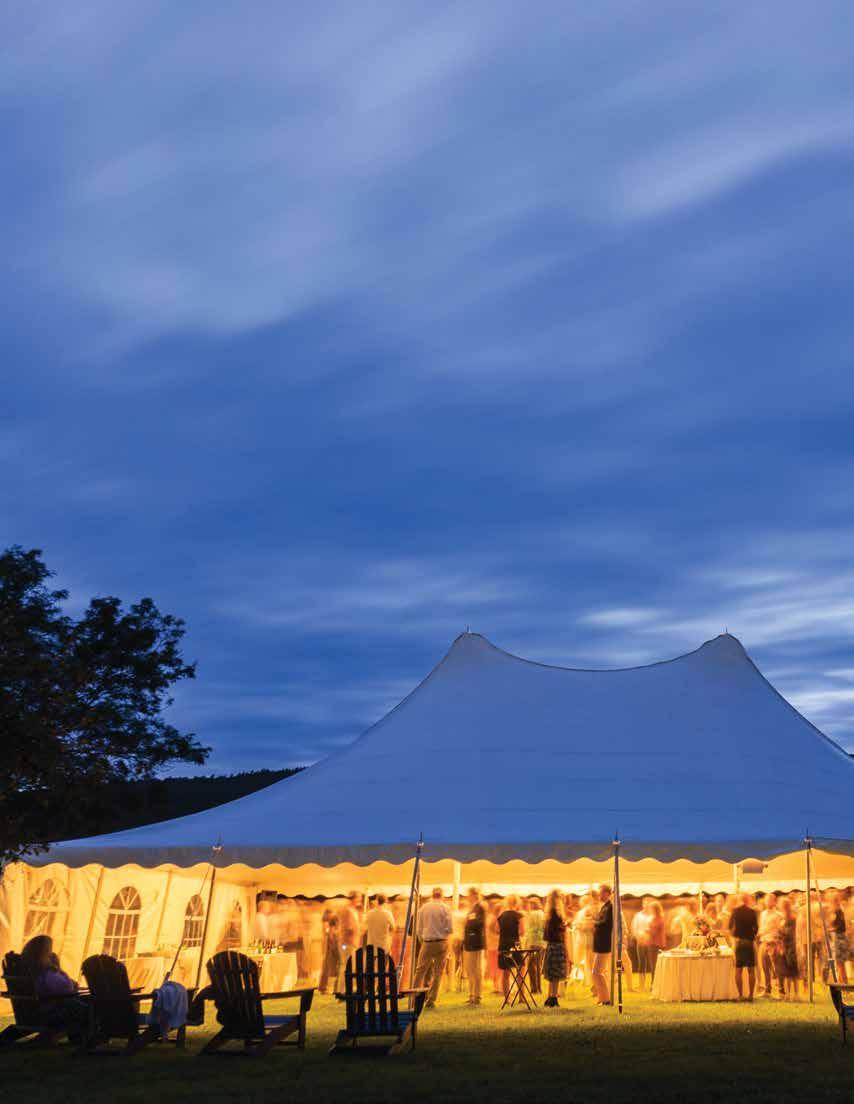
Celebrating Together
After more than two years, we were able to ease back into larger community gatherings this year. Though we remained responsive to the swings of the pandemic, we came together as often as we could, welcoming families and friends to performances, home games, hikes on our mountain, coffee and conversations, art shows, and family weekends. These moments remind us of the strength and spirit of the IMS community and how grateful we are for the connections we have made.
“It is so important to have that feeling of belonging in a community. At IMS I felt like I belonged.”
Robert Casanova, ’98
Student Projects Shakespeare in the Playground
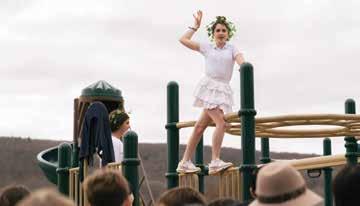
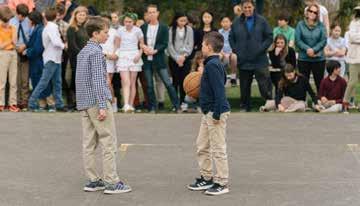
Geometry in Real Life
Students Tackle Math in 3D
In 6th grade humanities class, students studied Shakespeare’s The Tragedy of Julius Caesar with Mr. Tieger, opening discussions on leadership, politics, power and character. To add deeper understanding of the text, students chose scenes to memorize and then performed them in various locations on campus — the basketball court, the playground, a balcony — to a rapt audience, not of friends, Romans and countrymen, but of parents, teachers and classmates.
Coincidentally, as the dig began for our new Field House, a little piece of Humanities class history was unearthed: a laminated soliloquy from Romeo and Juliet. For almost a decade, Mr. Stewart would make these soliloquy cards for his students to memorize and perform. Perhaps this gives new meaning to “what is past is prologue.”
If you really want to understand the surface area and scale of three dimensional shapes, as well as how they work in form and (architectural) function, you have to do the math and build them yourself. Students in Mr. Tillman’s Foundations of Mathematics class were tasked to take what they had learned in geometry, and build three-dimensional structures the old fashioned way – with pencils, rulers, paper and tape. The biggest challenge, after deciding what they wanted to build, was calculating the precise measurements and accurately drawing out the flat, open versions of each shape. Final structures ranged from skyscrapers to homes complete with doors and lounge chairs.
“Kids don’t often connect how math relates to the real world,” says Mr. Tillman. “There is math in every shape and structure around us and this project showed my students that numbers on a piece of paper translate into everyday life.” Some of these students used their new skills to help design and build sets for the spring musical.
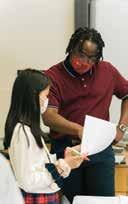



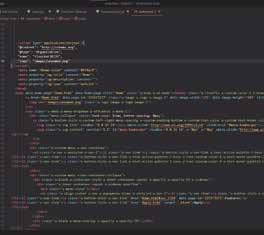

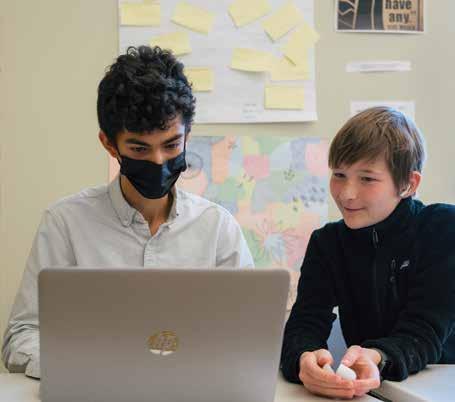
A Passion for Coding
Computer science develops problem-solving skills and computational thinking. It is also highly creative and can be a tool for self-expression. Students at IMS are able to explore the field of computer sciences through after-school enrichment programs on the Lower Campus, a Coding and Design class and a coding elective on the Upper Campus.
Recently, three ambitious 9th graders who have a passion for coding joined forces to design and build a new computer application — a chat server they call Finn Chat — using Python, a high-level programming language.
What started as a command-line application (where the user has to type commands for it to operate), this project has become more and more sophisticated as the students work on it. They continue to design new settings and features, and have now moved it to a computing platform which allows them to host the app remotely. The students’ creative enthusiasm has pushed them to set larger goals and objectives for the app, and has challenged them to learn new ways to code and implement small changes to the server and client application, while continuing the daily work of software development: testing and debugging their code.
IMS encourages students to explore their interests — to take their academic and creative dreams and run with them. This group of students did just that.
Looking Ahead: In fall 2022, IMS will begin offering an advanced placement Computer Science Principles course, for beginner and advanced programmers.
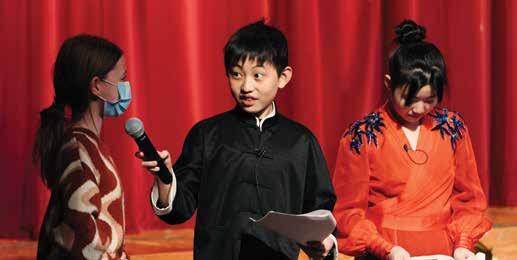
Arts

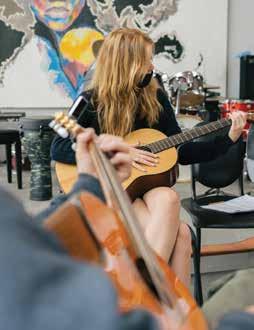

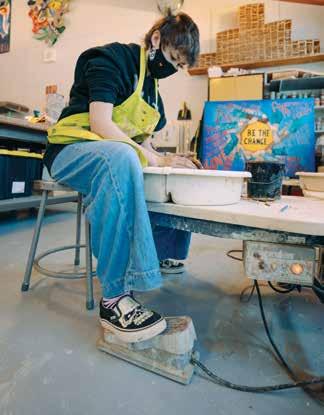
“IMS really nurtures exploration and individual creativity. IMS is such an encouraging environment to pursue interests; to evolve and grow as a human.”
Cayla O’Connell Davis, ’03
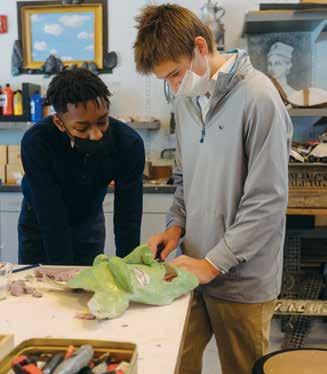


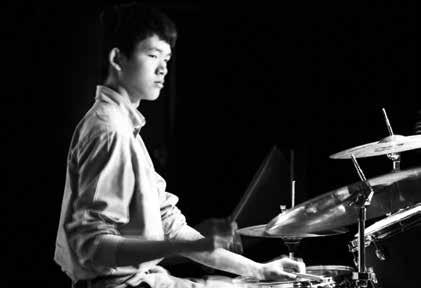
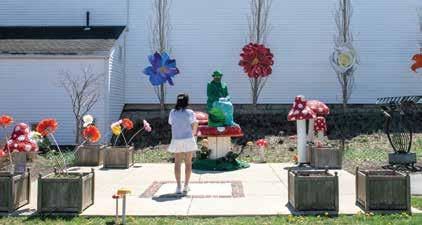

“At IMS, no one is afraid to be who they are.”
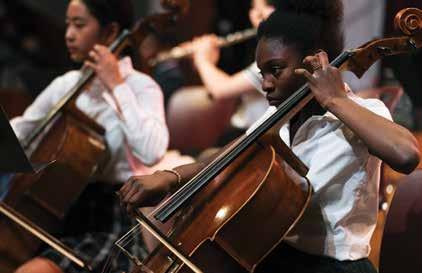
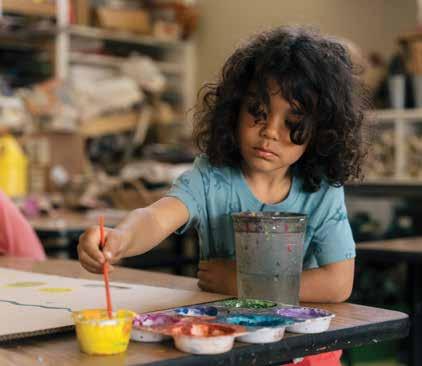
Alexa B., ’22
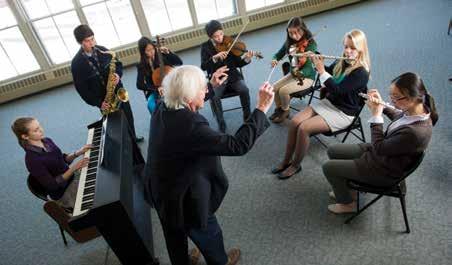
In Memoriam
Anton Kuskin (1936–2021)
For nearly 30 years, Anton Kuskin, better known as ‘the Maestro,’ dedicated his talents, creativity, and determination to Indian Mountain School where he built a robust and diverse music program. He was a brilliant musician — a professional flutist — and an inspirational teacher. As the school’s longest-serving Music Department Chair, Mr. Kuskin led the orchestra, taught classes, provided private lessons, and trained hundreds of IMS musicians. For his service to the school and dedication to his craft, Mr. Kuskin earned Mountain Cards, the School’s highest formal accolade, in 2005 and 2018. Anton passed away on his birthday, March 31, 2021, following a battle with cancer and pneumonia. His playful spirit and passion for music will be forever ingrained in the school.
An exceptional teacher and gifted administrator, Anton began his career in music education in the NYC public school system before co-founding the Brooklyn Boys Chorus School. In 1992, he made his way to Indian Mountain School where he served as the Music Department Chair. Mr. Kuskin spent his days arranging private lessons, running out to grab supplies, making instrument repairs, or editing and rewriting sheet music to accommodate the instruments in his orchestra. He is remembered by his colleagues as a man who was “always on fire with new ideas,” encouraging those around him to do better and dig deeper into their musical work.
“In 1992, shortly after we met, he challenged me to do something I hadn’t tried before: teaching voice lessons,” remembers Joanna Seaton, a longtime IMS music teacher and professional singer. “Together, we built the vocal music program into its present form. Anton could see talents in you that you, yourself, didn’t recognize, and that was a gift. His humor and kindness, his warmth, his love of teaching and of his students — all of those qualities leave an indelible impression on those of us lucky enough to be his friends. I miss him every day.”
The hard work that went into “the Maestro’s” performances was always rewarded with applause, but Anton never wanted the spotlight. Instead, he prefered his students and their music to shine. Anton was a model educator and took the sounds of different instruments and gave each a sense of importance and value, while bringing them all together in beautiful harmony. We are grateful to Anton for his years of service to the music department at IMS.
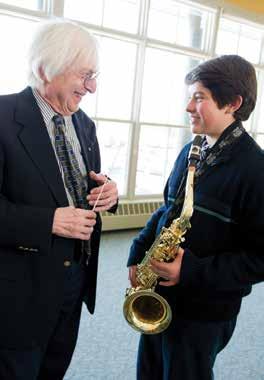
“His
humor and kindness, his warmth, his love of teaching and of his students--all of those qualities leave an indelible impression on those of us lucky enough to be his friends and musical colleagues. I miss him every day.”
Joanna Seaton, Longtime IMS Music Teacher
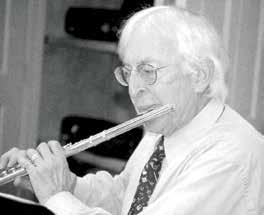
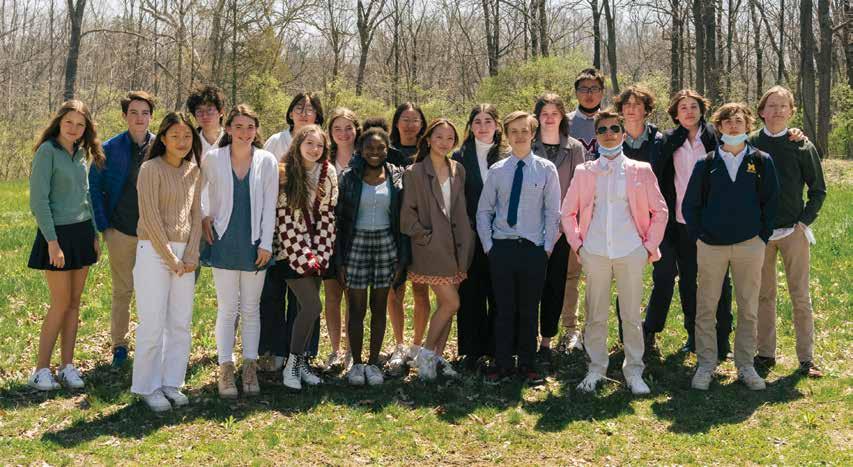
Troutbeck: Voices Past and Present
A Historical Hub for Creativity and Activism Hosts a New Generation of Thinkers
Troutbeck, in Amenia, New York, stands at the nexus of American History. Once the private estate of Joel Spingarn, Troutbeck has been host to creative thinkers, artists and activists for centuries. It was the location of the Amenia conferences which were transformational for the Civil Rights Movement and the NAACP.
Some of our IMS 8th graders have engaged in a year-long history project, along with students from several surrounding independent and public schools, to study change-makers both famous and lesser known, and uncover the hidden past in our area related to Troutbeck and the early Civil Rights Movement in the U.S.
This months-long project culminated at the Troutbeck Symposium on April 28 and 29, 2022. Students presented their research, engaged in discussion and heard reflections from guest scholars. In many ways, the symposium was a bridge between the past and the present, providing a forum for a new generation of changemakers.
The symposium began with 8th grade representatives of the choral group, Mountain Voices, singing “Lift Every Voice and Sing,” by James Weldon Johnson, an early 20th century activist, teacher, poet, scholar and participant at the Amenia
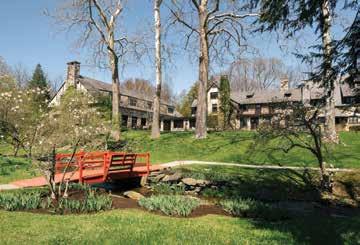
Conference at Troutbeck in 1933. The song was followed by IMS student Mansa Awuah, whose research this year focused on James Weldon Johnson. She shared her poem, “Harmonies of Liberty,” in which she wove her original prose with lines from “Lift Every Voice and Sing.”
To view a recitation of “Harmonies of Liberty,” visit: www.indianmountain.org/blog/voices-at-troutbeck
Capital Projects
“When we as a community collectively build spaces to gather and spaces for defining experiences, we together create enduring memories that fold meaning into our lives and travel with us far beyond IMS.”
Savannah and Jon Stevenson, P ’26 ’31
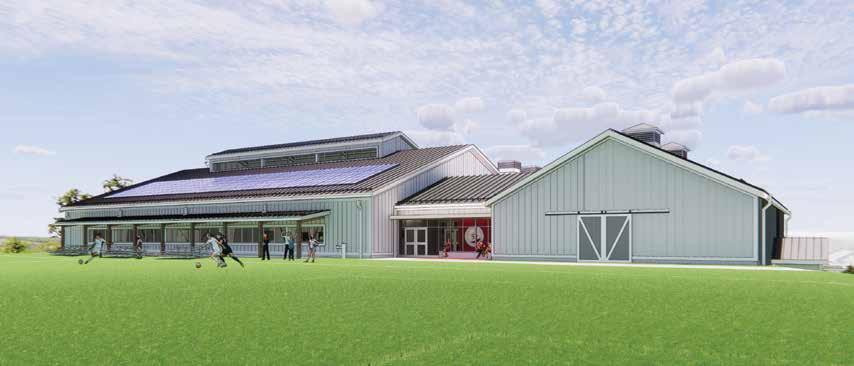
Coming Soon: The Field House and Centennial
Field
In June 2021, we broke ground on a 23,000 square foot Field House which will redefine our athletic programs and facilities and further strengthen our relationships in the community. Adjacent to the Field House will be our synthetic turf field. This project is on track to open in the fall of 2022, to coincide with our 100-year celebration. The Field House will include: two basketball courts, a multiuse community space, four international-size squash courts with spectator viewing gallery and a state-of-the-art fitness center and training room.
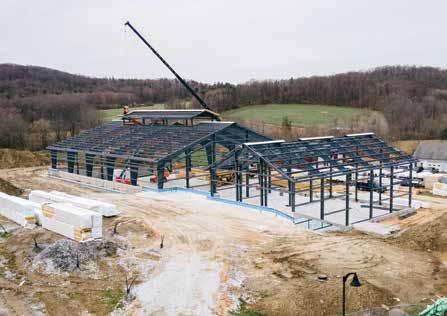
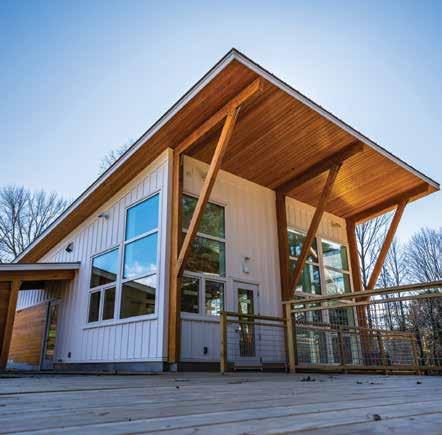

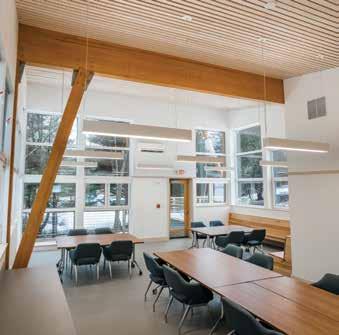
The OWL
IMS recently built a 1,500 square foot, net-zero, environmentally-focused Outdoor Working Lab (OWL) which facilitates our commitment to environmental stewardship through our curricula and also serves as a community and gathering space. It is powered by renewable energy through our three-acre solar field, which also provides power to the Main Building, Doolittle dorm, and the Student Center. Through a digital tablet in the main building, students are able to monitor the energy output and carbon dioxide offset from the solar field in real time.
In the Future: Assembly Hall, Performance Center, and Expanded Academic Space
IMS is stronger than ever, and we are in the planning stages of our next capital project which will further enhance the way our community learns and comes together. A larger assembly hall, new dining hall and additional classrooms will accommodate our growing number of students, and a new performing arts center will highlight our robust arts programs.
Why I Give
View from Advancement
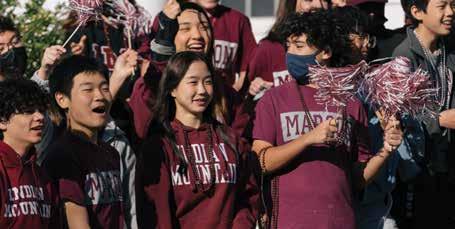
For almost 100 years, our community has worked together, diligently and passionately, to ensure that IMS is a center of living and learning and growth. We believe that students learn best when engaged in a diverse environment, surrounded and supported by caring adults and peers who challenge their thinking and inspire new ways of seeing the world. Donor support bolsters our ability to offer a full range of extracurricular activities, upgrade our technology, maintain and build upon our campus and community spaces, and advance the school’s commitment to diversity, equity, inclusion and belonging. It also serves as a vote of confidence in our school and inspires our steadfast work on behalf of IMS students, helping us to continue to make IMS extraordinary. We are grateful to the many people who have supported the school each year and we look forward to building our future together.
Warmly,

Sarah Smith Director of Institutional Advancement
“IMS played a foundational role in shaping my outlook on life, and giving back is my way of showing appreciation for all the wonderful faculty and staff who will continue to make students’ experience at IMS special.”
Jeffrey Lee, ’08
“The values that you are instilled with at IMS are of being a community member and a teammate — what can you do to make the day better for the people around you?”
Allison Zelman, ’99
“Our daughter goes to school every day excited to learn and interact and that is everything we could hope for. IMS is a jewel of a school and we are happy to support it in every way we can.”
Mark and Monica Winmill, P ’28
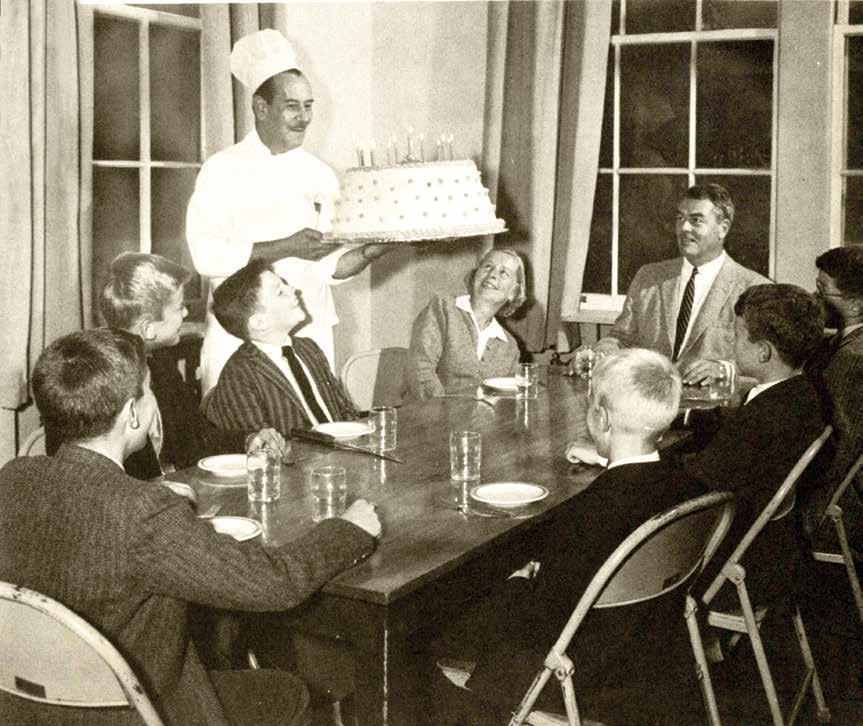
Happy Centennial, IMS!
In the fall of 2022, we’re kicking off a year of festivities to celebrate 100 years of growth and learning at IMS. Join us as we celebrate our first century and our next 100 years.
SAVE THE DATE: Centennial Weekend October 13 – 15, 2022
Browse photos from our school’s history and traditions, and stay up-to-date on all of the centennial events we have planned: www.indianmountain.org/centennial
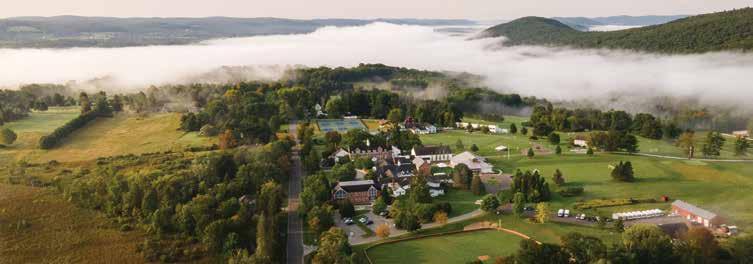
Indian Mountain School
211 Indian Mountain Road
Lakeville, CT 06039
(860) 435-0871
alumni@indianmountain.org www.indianmountain.org
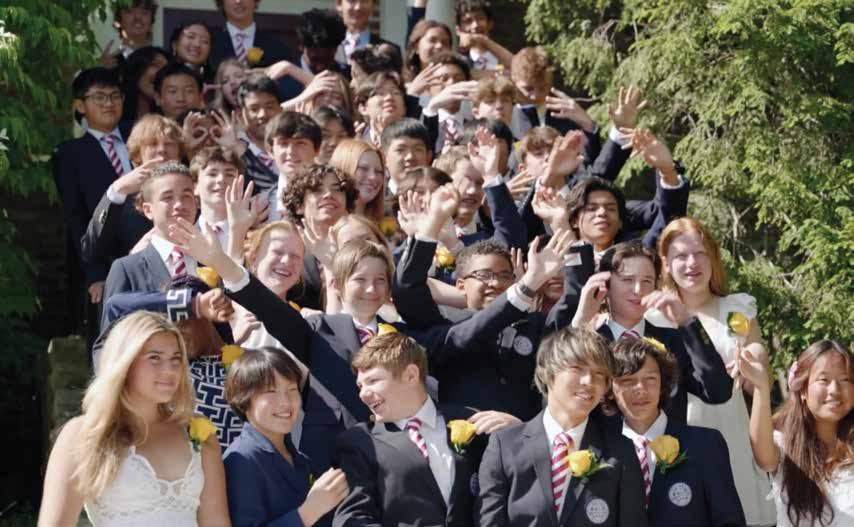
Editors: Emily Benson, Aly Morrissey
Contributors: Emily Benson, Aly Morrissey, Jody Soja, Sarah Smith
Photographer: Sam Decock
Design: Graphic Details, Inc.
Printing: Quality Printing, Pittsfield, MA
Indian Mountain School inspires in each member of our community the courage to climb, the joy to create, the passion to learn, and the spirit to contribute in kind and meaningful ways.
